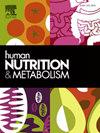Metabolite profiling in assessing ulcerative colitis activity: A systematic review
IF 1.8
Q3 ENDOCRINOLOGY & METABOLISM
引用次数: 0
Abstract
Background
Ulcerative colitis (UC) is an immune-mediated chronic inflammatory condition of the colon, characterized by defects in the intestinal epithelial barrier, dysbiosis of the microbiota, and immune dysregulation. Metabolite profile has been widely and successfully used to characterize patient features in UC, as the development of metabolomics technology. Specific combinations of small metabolites can accurately depict the real-time pathological state of the body. Previous systematic reviews have focused on metabolite analysis between UC patients and healthy individuals, but have not systematically evaluated metabolite changes in different disease stages. This study focused on distinguish between patients in active and inactive phases, and even have the potential to predict changes in disease activity.
Aim
To summarize the distinct metabolites between the active and remission phases in serum and colonic mucosa in patients with UC.
Methods
A comprehensive literature search was conducted in PubMed, Embase, the Cochrane Library, Web of Science, WanFang Data, and China National Knowledge Infrastructure from 1995 to 2022. Studies were selected which included metabolomics detection on serum or mucosal samples from patients with active or remission phase UC. The disease activity was assessed by using the Mayo score, Ulcerative colitis activity index score, or Geboes score. The risk of bias was assessed using the Newcastle-Ottawa Scale.
Results
Eleven articles (10 in English and 1 in Chinese) and 357 patients were included. Qualitative analysis was performed according to the classification of gas chromatography/mass spectrometry, liquid chromatography/mass spectrometry, or nuclear magnetic resonance. In the active period of UC, metabolites such as lipids, Amino acids showed a certain trend of change. Arachidonic acid showed specific upregulation in both serum and mucosal samples during the active stage in patients with UC.
Conclusion
There exists an association between metabolite profile and disease activity in patients with UC. Especially in patients with active UC, the lipid metabolite (arachidonic acid) is highly expressed simultaneously in the serum and mucosa. This finding will identify small molecule biomarkers that may potentially replace colonoscopy in the assessment and prediction of UC disease activity in the future, which indicates a significant potential for biomarker development.
评估溃疡性结肠炎活动的代谢物谱分析:一项系统综述
背景溃疡性结肠炎(UC)是一种免疫介导的结肠慢性炎症,以肠上皮屏障缺陷、微生物群失调和免疫失调为特征。随着代谢组学技术的发展,代谢物谱已被广泛并成功地用于UC患者特征的表征。小代谢物的特定组合可以准确地描述身体的实时病理状态。以往的系统综述主要集中在UC患者和健康个体之间的代谢物分析,但尚未系统地评估不同疾病阶段代谢物的变化。本研究侧重于区分活动期和非活动期患者,甚至有可能预测疾病活动度的变化。目的总结UC患者血清和结肠黏膜活性和缓解期代谢产物的差异。方法对1995 - 2022年PubMed、Embase、Cochrane Library、Web of Science、万方数据、中国知识基础设施数据库进行综合文献检索。选择的研究包括对活动期或缓解期UC患者的血清或粘膜样本进行代谢组学检测。疾病活动性通过Mayo评分、溃疡性结肠炎活动指数评分或Geboes评分进行评估。偏倚风险采用纽卡斯尔-渥太华量表进行评估。结果共纳入文献7篇(英文10篇,中文1篇),357例患者。定性分析按照气相色谱/质谱、液相色谱/质谱或核磁共振分类进行。在UC的活跃期,代谢产物如脂类、氨基酸等呈现一定的变化趋势。在UC患者的活跃期,花生四烯酸在血清和粘膜样本中均表现出特异性上调。结论UC患者代谢物谱与疾病活动度存在相关性。特别是在活动性UC患者中,脂质代谢物(花生四烯酸)在血清和粘膜中同时高度表达。这一发现将确定小分子生物标志物,可能在未来取代结肠镜检查评估和预测UC疾病活动,这表明生物标志物开发的巨大潜力。
本文章由计算机程序翻译,如有差异,请以英文原文为准。
求助全文
约1分钟内获得全文
求助全文
来源期刊

Human Nutrition and Metabolism
Agricultural and Biological Sciences-Food Science
CiteScore
1.50
自引率
0.00%
发文量
30
审稿时长
188 days
 求助内容:
求助内容: 应助结果提醒方式:
应助结果提醒方式:


